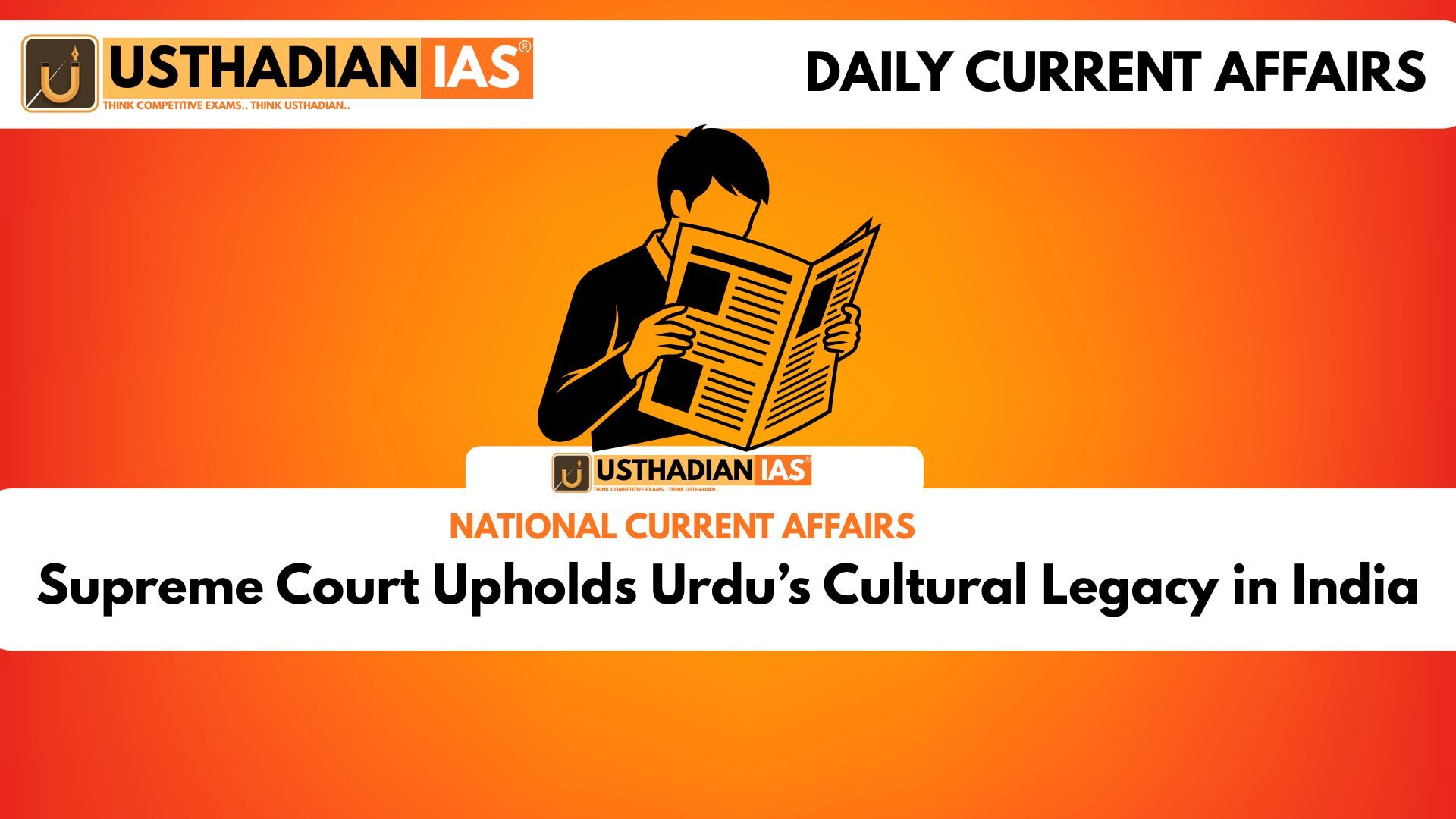A Powerful Statement on Language and Identity
Supreme Court Upholds Urdu’s Cultural Legacy in India: In a landmark judgment, the Supreme Court of India recently delivered a strong defence of the Urdu language, dismissing claims that it was alien or religiously exclusive. The case stemmed from a legal challenge to the use of Urdu signage on a municipal building in Patur, Akola district, Maharashtra. The petitioner claimed this violated the use of Marathi, the official state language. However, the court turned this into an opportunity to reaffirm the secular and inclusive fabric of India’s linguistic identity.
Urdu: A Symbol of Composite Culture
Calling Urdu a remarkable reflection of India’s rich composite culture, the Supreme Court emphasized its vital role in upholding the Ganga-Jamuni tehzeeb, the harmonious cultural blend of North and Central India.The court emphasized that Urdu is not a foreign language, but one born, nurtured, and refined in India, deeply embedded in Indian poetry, literature, and identity.
The judges observed that language does not equate to religion. The idea that Hindi is for Hindus and Urdu is for Muslims was dismissed as a “pitiable digression from reality.” The judgment reminded citizens that language is a marker of civilization, not a boundary of faith.
Language, Script, and Shared History
In a thoughtful linguistic reflection, the court pointed out that Hindi and Urdu are fundamentally the same language, differing mostly in script and stylistic evolution. Hindi uses Devanagari, while Urdu employs Nastaliq script, but grammar, phonology, and syntax often overlap. The court blamed purist movements for pushing the two languages further apart—Hindi becoming Sanskritised, and Urdu leaning towards Persian vocabulary.
The shared usage of words in daily conversations proves how deeply intertwined the languages are. Interestingly, even the word ‘Hindi’ has Persian roots, derived from ‘Hindavi’.
Constitutional and Demographic Context
The court highlighted Article 345 of the Indian Constitution, which allows states to adopt additional official languages. Urdu holds official status in several Indian states including Andhra Pradesh, Bihar, Jharkhand, Telangana, Uttar Pradesh, and West Bengal. Union Territories like Delhi and Jammu & Kashmir also recognize Urdu.
As per the 2011 Census, India had 270 mother tongues with more than 10,000 speakers. But the real number of spoken tongues could be in the thousands, showing India’s unmatched linguistic diversity.
STATIC GK SNAPSHOT
Supreme Court Upholds Urdu’s Cultural Legacy in India:
| Topic | Details |
| Supreme Court Ruling | Urdu is part of India’s cultural ethos |
| Case Origin | Use of Urdu on a municipal signboard in Akola, Maharashtra |
| Court Observation | Language ≠ Religion; Urdu is Indian, not foreign |
| Urdu Official Status | Recognised in 6 states & 2 UTs under Article 345 |
| States with Urdu as Official Language | Andhra Pradesh, Bihar, Jharkhand, Telangana, UP, WB |
| UTs with Urdu | Delhi, Jammu & Kashmir |
| Hindi & Urdu Relation | Fundamentally one language; differ in script |
| Notable Term | Ganga-Jamuni Tahzeeb – composite Indo-Islamic culture |
| Census 2011 | 270 mother tongues with >10,000 speakers |








